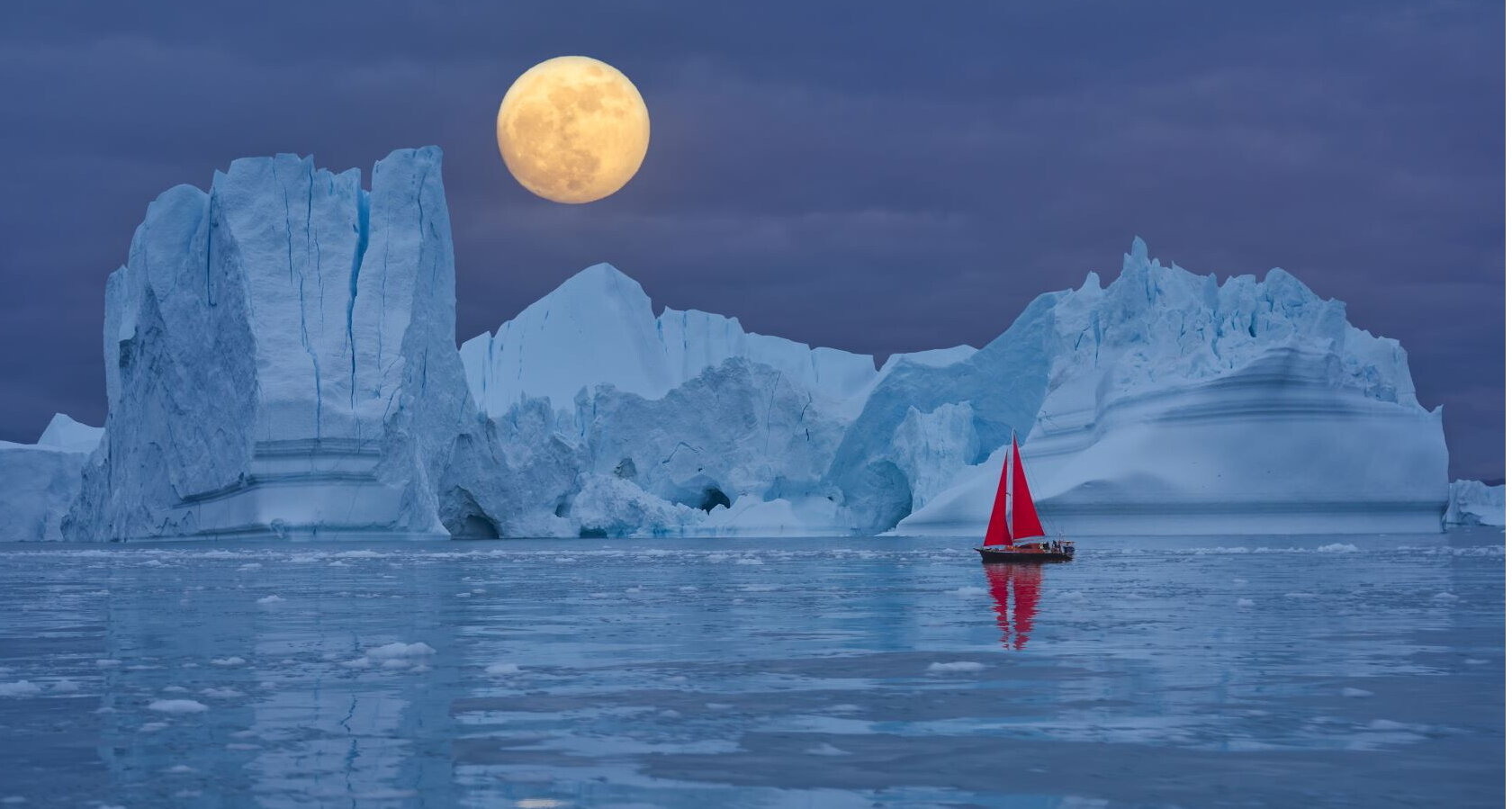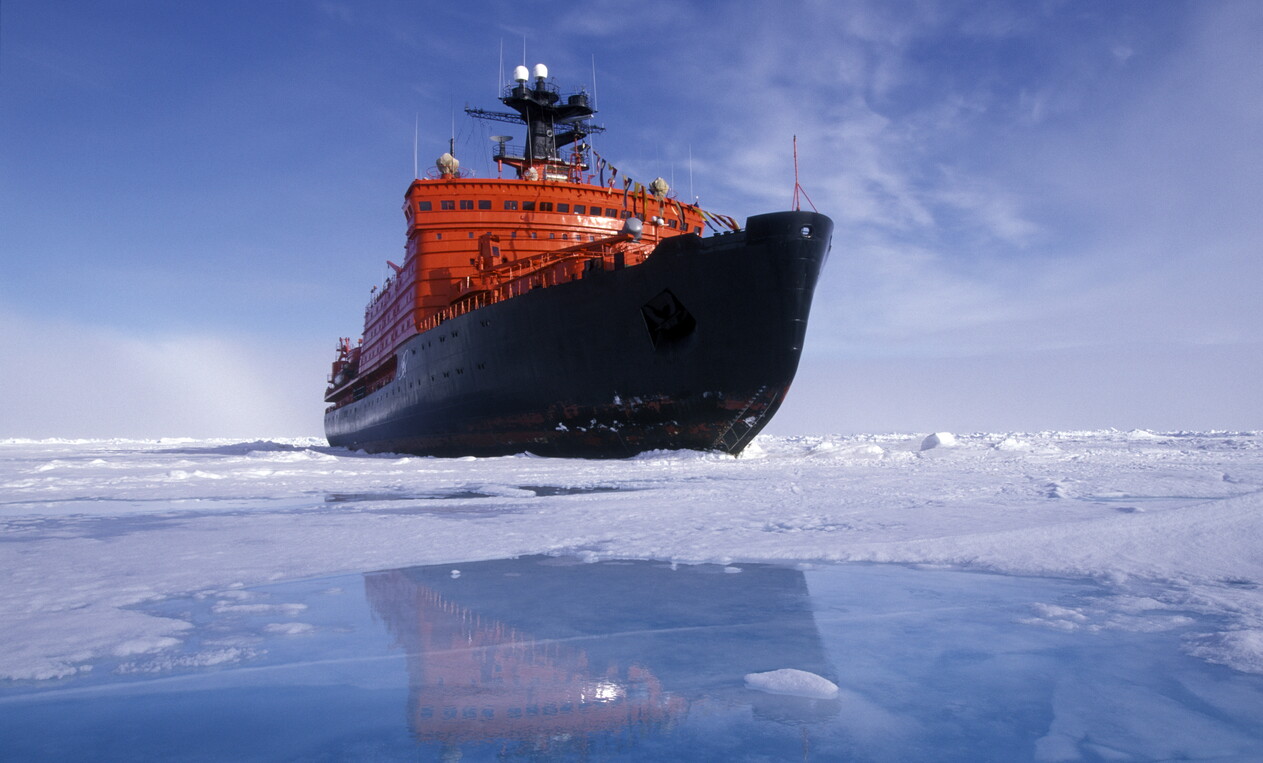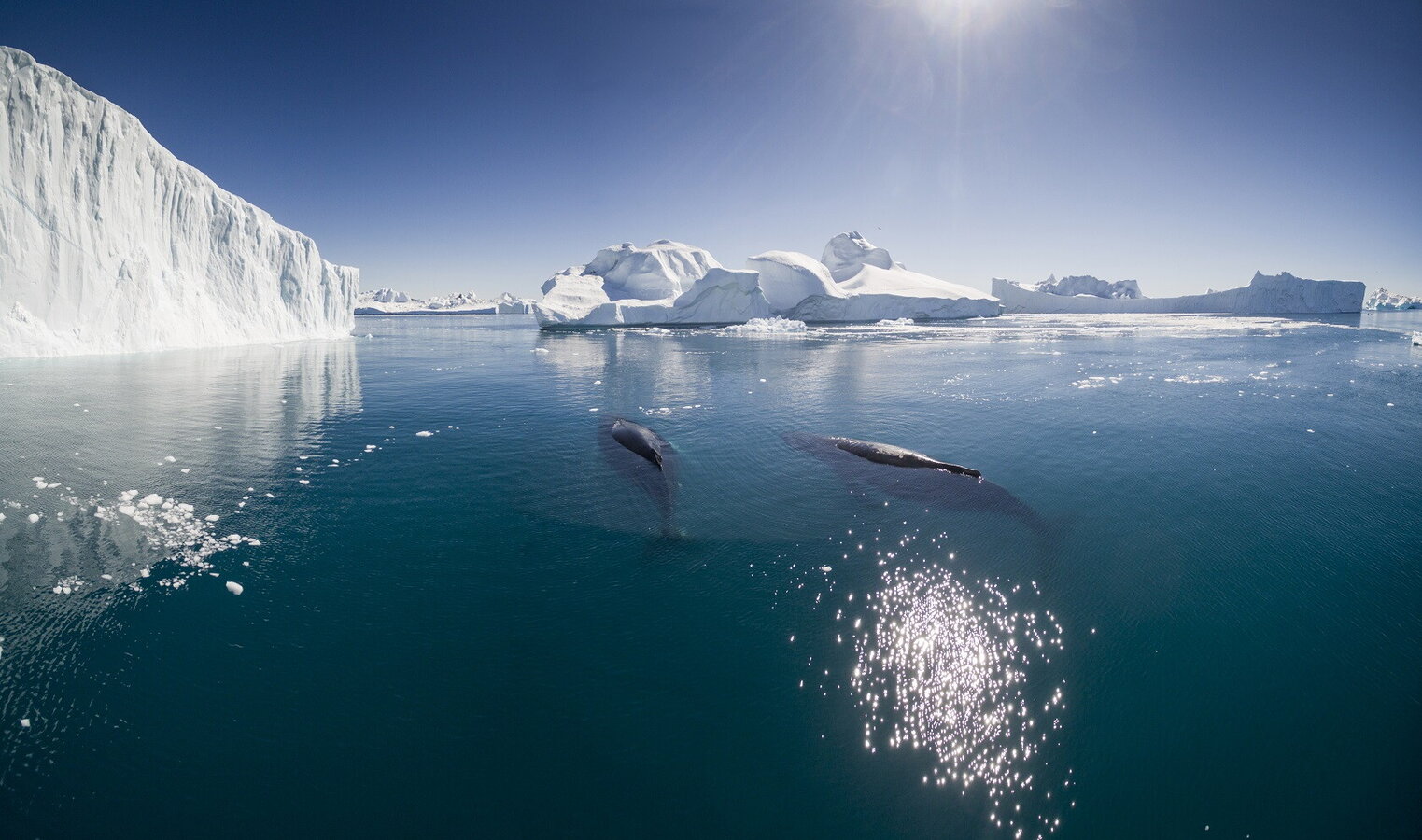
The ice road
New routes
The melting of the Arctic ice cap has unlocked new shipping routes, with the potential to reshape the global maritime transport network, which carries the vast majority of goods traded between continents
12 minA
rctic amplification is one of the most significant and immediate consequences of global warming. Its impact extends beyond the Arctic itself, affecting not only ecosystems and human life but also the structure of global trade—an especially critical factor in an increasingly interconnected world.
Arctic, or polar, amplification refers to the accelerated rate of warming in the Arctic compared to the rest of the world. Until recently, scientists estimated that temperatures near the poles were rising at twice the global average. However, new evidence shows an even greater disparity—Arctic temperatures are now increasing three to four times faster than at the equator.
The most immediate concern is the melting of polar ice caps and the resulting rise in global sea levels, which poses serious risks to coastal communities. However, the shrinking Arctic ice cap could also have far-reaching consequences for global maritime trade. With 80 to 90 percent of international goods transported by sea, changes in Arctic ice coverage could significantly alter existing shipping routes.
The status of the Arctic Ocean
The Arctic Ocean holds a unique status. In 1996, following several international treaties, the Arctic Council was established to protect the region’s fragile ecosystem and prevent uncontrolled resource exploitation. The Arctic is believed to contain a substantial share of the world’s untapped energy reserves—around 15 percent of undiscovered oil and 30 percent of undiscovered natural gas. The Arctic Council consists of the eight nations that border this vast ocean: Canada, Denmark (representing Greenland and the Faroe Islands), Finland, Iceland, Norway, Russia, the United States, and Sweden.
Under the United Nations Convention on the Law of the Sea, control over the sea lanes connecting the Bering Strait to the Atlantic shifts from the Arctic Council to individual nation-states once these routes become navigable—meaning ice-free for most of the year. In September 2019, Arctic sea ice covered just 4.3 million km², down from 6.1 million km² two decades earlier. If this trend continues, the prospect of regular Arctic Ocean crossings could soon become a reality.
The Arctic Routes
All Arctic sea routes converge at the Bering Strait, the gateway between the Pacific and the Arctic Ocean. Ships traveling westward enter here, while those heading east exit through the same passage. Unlike the Pacific approach, the Atlantic side of the Arctic lacks a similarly narrow chokepoint, instead opening widely between Greenland and the Norwegian coast.
The most direct Arctic route is the Transpolar Sea Route, which runs near the North Pole but remains largely unnavigable due to persistent ice cover. Closer to the Russian coastline lies the Northern Sea Route (NSR), which follows the Arctic coast of Russia and Scandinavia. Lastly, the legendary Northwest Passage (NWP) extends from the Bering Strait along the coasts of Alaska and Canada, passing through Baffin Bay before reaching the eastern United States.
F
rom multiple perspectives, the Northern Sea Route (NSR) is the most strategically significant. It offers a direct passage between the Atlantic and Pacific, reducing travel distances by up to 50 percent, cutting transit times by 14 to 20 days on average, and lowering greenhouse gas emissions by up to 24 percent . However, navigating such a challenging route requires substantial investment in specialized ships designed to meet strict construction and safety standards. While operating costs are higher, the overall advantages remain significant—particularly in an increasingly competitive global maritime transport market.
Geopolitical tensions over Arctic sovereignty add another layer of complexity. As noted, the Northern Sea Route (NSR) runs along Russia’s coastline, from the Kamchatka Peninsula to the Barents Sea, placing it under Russian control and, to some extent, that of its allies. Meanwhile, the Northwest Passage (NWP)—which could become more viable if Arctic ice continues to recede—falls primarily within the territorial waters and sphere of influence of Canada and Greenland/Denmark. This geopolitical landscape helps explain recent statements by the 47th U.S. president, Donald Trump. His renewed calls for Canada to align more closely with the U.S., along with his revived offer to purchase Greenland, signal a strategic shift. The U.S. appears to be positioning itself to increase its influence in the Arctic—a region poised to become a critical geopolitical and economic theater in the coming decades, yet one where America currently lacks a dominant foothold.
Global trade, bottlenecks and choke points
The Arctic’s commercial and political significance becomes even clearer when viewed in the broader context of global maritime trade and its vulnerabilities. The world’s two main shipping chokepoints—the Panama Canal and the Suez Canal—have faced multiple crises in recent years, threatening to reshape global supply chains. Panama, a key focus of Donald Trump’s recent statements, has been particularly affected. In the second half of 2023 and into early 2024, a combination of global warming-induced drought and El Niño forced authorities to cut daily ship transits by nearly 40 percent, from 36 to 22. As a result, many shipping companies had to reroute their fleets around South America, significantly increasing transit times and costs.
The Panama crisis initially shifted the balance in favor of the alternative route between Asia and the U.S. via the Indian Ocean and the Suez Canal. However, this route has also faced disruptions. Houthi rebel attacks on shipping convoys in the Bab el-Mandeb Strait, the gateway to the Red Sea, have significantly reduced normal traffic through the Suez Canal, further complicating global trade flows.
The disruptions that hit global transport in 2024 risk becoming a persistent challenge, keeping the ocean shipping industry in a state of ongoing crisis. Chokepoints such as the Strait of Malacca, the Bosphorus (as seen during the Russia-Ukraine war), or the Taiwan Strait could close at any moment, disrupting global supply chains and triggering far-reaching economic consequences.
The Polar Code of 2017
Arctic navigation is governed by the Polar Code, a system of international agreements that took effect on January 1, 2017. The code sets standards for ship design, construction, and equipment while also prioritizing environmental protection and the preservation of the polar region’s unique ecosystems.

Fishing vessels remain the most common type of ship navigating the Arctic Ocean, particularly those using methods other than trawling, which is often impractical due to ice. In 2024, they accounted for 38 percent of all vessels in Arctic waters, down slightly from 43 percent in 2013. However, ship traffic is steadily increasing across all categories, including ROROs and container ships. Although still relatively few, these larger vessels present unique technological challenges when operating in partially frozen waters.
In 2024, the Arctic Ship Traffic Data (ASTD) System recorded 1,781 unique ships entering Arctic waters—an increase of 37 percent over the past twelve years. The expansion is even more striking when measured by total distance traveled, which grew by 108 percent over the same period, surpassing 12.7 million nautical miles. A key factor in this growth is the rise of Arctic cruise tourism, which attracts high-end travelers seeking exclusive experiences and itineraries in one of the world’s most remote regions.
The potential for Arctic navigation under the Polar Code is closely tied to the exploitation of natural resources found above the Arctic Circle. A notable example is the Mary River Project, an open-pit iron ore mine on Baffin Island, Canada. One of the northernmost mines of its kind, it has been producing high-grade iron ore (65-70 percent pure ferrous material) since operations began in 2014. During the ice-free season, a growing number of bulk carriers have been transporting ore from the mine through Baffin Bay and the Davis Strait to processing plants in North America. However, plans to expand the project have faced strong opposition from local Inuit communities concerned about its environmental and cultural impact.
The driving force behind the expansion of Arctic maritime transport—and the nation with the greatest strategic interest in exploiting these waters—is China. Although the People’s Republic of China is not a member of the Arctic Council, it has strengthened ties with Russia, which plays a dominant role in the region. The Russian-Chinese alliance has a clear objective: to facilitate the navigation of Chinese-flagged vessels through Arctic waters. This ambition is evident in the Polar Silk Route, an extension of China’s Belt and Road Initiative, which aims to integrate Arctic shipping into its broader global trade strategy.
F
ounded on the principle that the Arctic Ocean should not be controlled solely by coastal states, the Polar Silk Route, launched in 2018, centers on the Northern Sea Route (NSR) as a strategic alternative. Its primary goal is to mitigate the risk of disruptions in the Strait of Malacca, a critical chokepoint through which approximately 60 percent of China’s oil and gas imports from the Middle East currently flow.
Since 2013, China has operated two icebreakers in the Arctic—the Xue Long (Snow Dragon) and Xue Long 2—conducting scientific research to support future navigation. At the same time, China has deepened its mining partnerships with Russia, particularly in the extraction of rare earth elements, which are crucial for advanced technologies.
In 2023, China launched what can be seen as the first regular container shipping service between Asia and Europe via the Arctic, completing seven transits along this route. By 2024, the number of voyages doubled to 14, transporting approximately 150,000 tons of goods. This growing activity signals China’s commitment to Arctic shipping and marks the beginning of what many see as an imminent “race to the Arctic.”
Once considered a remote and fragile ecosystem reserved for research and conservation, the Arctic Ocean is rapidly evolving into a key player in global transportation, driven by the realities of climate change.

